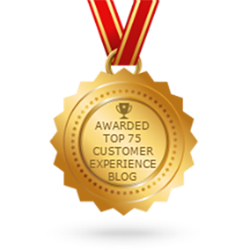Test Before You Commit: How Eye-Tracking Research Can Help You Improve Your Retail Customer Experience

Over $600 Billion is spent on advertising every year – much of it in retail promotions – to influence shopper behavior. But there is surprisingly little research and understanding about how the various elements of the retail shopping experience impact shopper behavior – either in the store or online.
Many companies measure digital and retail traffic, store and category sales as well as e-commerce metrics like abandoned shopping carts and email open rates. But a detailed understanding of the specific shopper behavior at every stage can provide critical insight to improvement efforts that have rapid, powerful and measurable impacts on conversion, sales and repeat purchases.
A key technology to understanding shopper behavior with precision and science is eye tracking. The opportunity for retailers to test improvements to their shopping experience BEFORE a full deployment of the changes is essential to building an agile, data-driven company with superior results.
Eye Tracking research – overview and research applications
Eye tracking research allows shoppers attention to be captured and analyzed throughout their shopping journey – in a retail store, in a drive-through format or online with a mobile device or laptop. Eye-tracking glasses are now small enough to look like regular eyewear so they don’t create an awkward encounter with retail associates or in a “try-it-on” situation at a makeup counter or fitting room. Eye-tracking glasses capture a great deal of critical data that can be analyzed to scientifically determine what shoppers look at first, second and last, how long they look at promotional images, menus or product packaging and can identify when they are confused.
A national restaurant chain wanted to know what customers looked at during their experience that led to buying decisions – or confusion – in their restaurants, in their drive-thru lanes and online for order pickup or delivery. Customers were outfitted with eye-tracking glasses in 2 minutes prior to their dining experience and easily captured data about
National apparel and makeup chains were studied to identify the promotional imagery, sale signage, product packaging/tags and associate service through eye-tracking research. Various store formats (mall vs. downtown stores, small vs. large, multi-brand department stores vs. single-brand outlets) were studied to capture the differences and relate them to shopper behaviors. Technology usage in retail formats was also studied to determine mobile device use for product data lookup, price comparison, product recommendations, inventory availability, expert reviews and user feedback/ratings.
The insights that emerged included:
-
-
- Profiling the 4 “moments of truth” along the journey that defined the overall experience.
- Determining which stores were showing “on-brand” vs. “off-brand” displays that were correlated to product and category sales levels.
- Identification of 10-20 friction points that were encountered by shoppers – and the degree of impact to the shopper for each one for prioritization, improvement and measurement.
-
Linking these insights to business results quantified the following impacts:
-
-
- The ability to improve shopper NPS by 30-50 points by delivering an on-brand experience that addressed the core needs of the shopper along the various journey stages.
- Focusing on delivering an “on-brand experience” in the 4-5 key areas of the customer experience results in an industry-leading customer loyalty opportunity, with measurable and immediate NPS improvement.
- 30% improvement in customer lifecycle revenue, based on visit frequency and increased spending per visit.
- Improving the experience would allow the company to expand its customer base within the family members and their friends, making new customer growth faster and less expensive.
-
Given the impact of these and other insights, many companies are using eye-tracking analysis and research in pre-deployment and pilot testing situations for changes in their physical and digital shopping experiences, including:
-
-
- Testing of new menus, menu boards and store layouts in test restaurants for pre-launch refinement
- Mobile app testing and feedback for online store design
- BOPUS (Buy Online, Pick Up in Store) experience capture, testing and design improvements
- Drive-thru experience capture or improvement feedback
- Store format / layout / plan-a-gram testing prior to rollout
- Email offer analysis, especially for A/B testing feedback
-
Call 1-800-549-7170 or send an email to nitin@goldresearchinc.com for a free consultation on this topic.
Gold Research is an award-winning Customer Journey Management firm with extensive experiences in B2C and B2B journey mapping, path-to-purchase research with a special focus in deploying “real-time” and behavioral/neuroscience research formats to gather in-the-moment customer insights.

Awarded by Feedspot
![]()
Contact Us
1-800-549-7170
GoldResearch, Inc.
8000 I.H. 10 West | Suite 600San Antonio, Texas, 78230